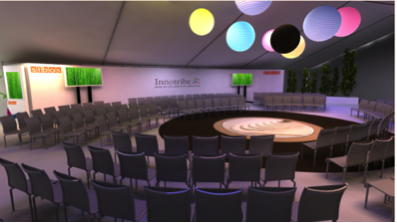Our current post industrial era has seen dramatic changes happening to what we define as “work”. One of the things that mostly impacted work has been the rapid pace of technological innovation. How will “work” be in a decade or twenty years ? How can we redefine what we understand as “work” so as to serve our current needs ? There have been many who have tried to find answers to these questions, and one of these is Stowe Boyd, the lead researcher for the “future of work” at GigaOm Research.
Boyd is a man who has spent the past 15 years researching and understanding social tools to help people understand their impact on business, society and media. In particular, over the past few years he has spent his time focusing on the growth of the social economy and the future of work. From his background as a programmer his core focus has changed and he now considers himself to be a “socialogist.” You might be wondering what a socialogist is. Boyd explains that it includes:
“Advocating new societal and business policies based on the rise of social tools, with a healthy dose of social criticism and future studies in the mix.”
Boyd played a key role in the building and spreading of critical ideas, such as social tools, hashtags, work media, publicy, the post normal era and socialogy. This has led him to present at a variety of conferences and events such as Web 2.0, Enterprise 2.0, GigaOM, SxSW and TEDxMidAtlantic. He heads research into social business and the future work at GigaOM Research.
Shifting into a new economical order
It is Boyd’s belief that we have moved into a volatile postnormal stage in history. He suggests that this age could bring chaos, populist movements attacking the old economic order, and 3D printing. He also believes that this latter point will drive a more “local economy”. Boyd believes that some of these patterns can also be observed during times of major change in the past – such as the chaos and attacking the old economic order. He suggests that volatility, uncertainty, complexity and ambiguity, are all prevalent currently, leading the world economic order to become very unstable. Boyd likens this to what happened in developing nations after the Second World War when European governments withdrew from their colonies, leading to many new nations emerging. Boyd compares this with the current leaders setting policy suggested to by corporations.
Boyd suggests that this could lead to all kinds of radical changes. It is suggested that people will move into artisanal manufacturing during these times ahead. Such a trend is already a reality with the Maker´s movement gaining momentum. Boyd envisions as well that:
Nine characteristics for a new way of work Intelligenthq“A new caste of millions of artisanal product designers [ will be] building small runs of 3D printed products, sharing designs and selling through a social web, using low-cost machinery and sidestepping the control of large corporations.”
A Manifesto For a New Way Of Work
In light of all of this turmoil and change, Stowe Boyd has proposed a manifesto for a new way of work. This is also grounded in two major premises. One is that employee engagement is low, and that less than a third are actively engaged. The second is that business leaders want productivity improvements to remain competitive, but that automation on its own cannot achieve this. The transition that is about to happen will be as big as the industrial revolution according to Boyd. This has led him to the production of his manifesto, named A New Way of Work.
A New Way of Work embraces a number of different core themes. One is that dissent (as opposed to consensus) will be the best way of getting past “groupthink” and driving much-needed creativity and innovation. Boyd suggests cooperative behaviour rather than collaborative behaviour will be needed, with cooperative work patterns taking precedence over collectivism. Creativity will rise above tradition, and autonomy will become normal. This latter point is a paradox according to Boyd, given the level of connection and interaction we have with one another. Hyperdemocracy will take the place of oligarchy, and Boyd opines that today’s businesses are oligarchies where few drive the work of many.
A leading point in the manifesto is “fast and loose” instead of slow and tight”. What Boyd means by this is that companies need to be “looser” in nature, quickly developing voluntary associations into autonomous teams that are needed to drive innovation and provide a supportive environment for the highest performers. Other important manifesto features are a move to laissez faire rather than entrepreneurial since the future is unpredictable. A laissez faire system would allow a greater level of experimentation rather than one strategic plan that may be based on an incorrect idea of the future. The manifesto also suggests hyperlean rather than the top down approach that currently operates, and small and simple rather than large and complex. Perhaps unsurprisingly, open and public will be the new way of things, and of course this is already occurring. Finally emergent strategy will replace deliberate strategy.

Maria Fonseca is the Editor and Infographic Artist for IntelligentHQ. She is also a thought leader writing about social innovation, sharing economy, social business, and the commons. Aside her work for IntelligentHQ, Maria Fonseca is a visual artist and filmmaker that has exhibited widely in international events such as Manifesta 5, Sao Paulo Biennial, Photo Espana, Moderna Museet in Stockholm, Joshibi University and many others. She concluded her PhD on essayistic filmmaking , taken at University of Westminster in London and is preparing her post doc that will explore the links between creativity and the sharing economy.


























